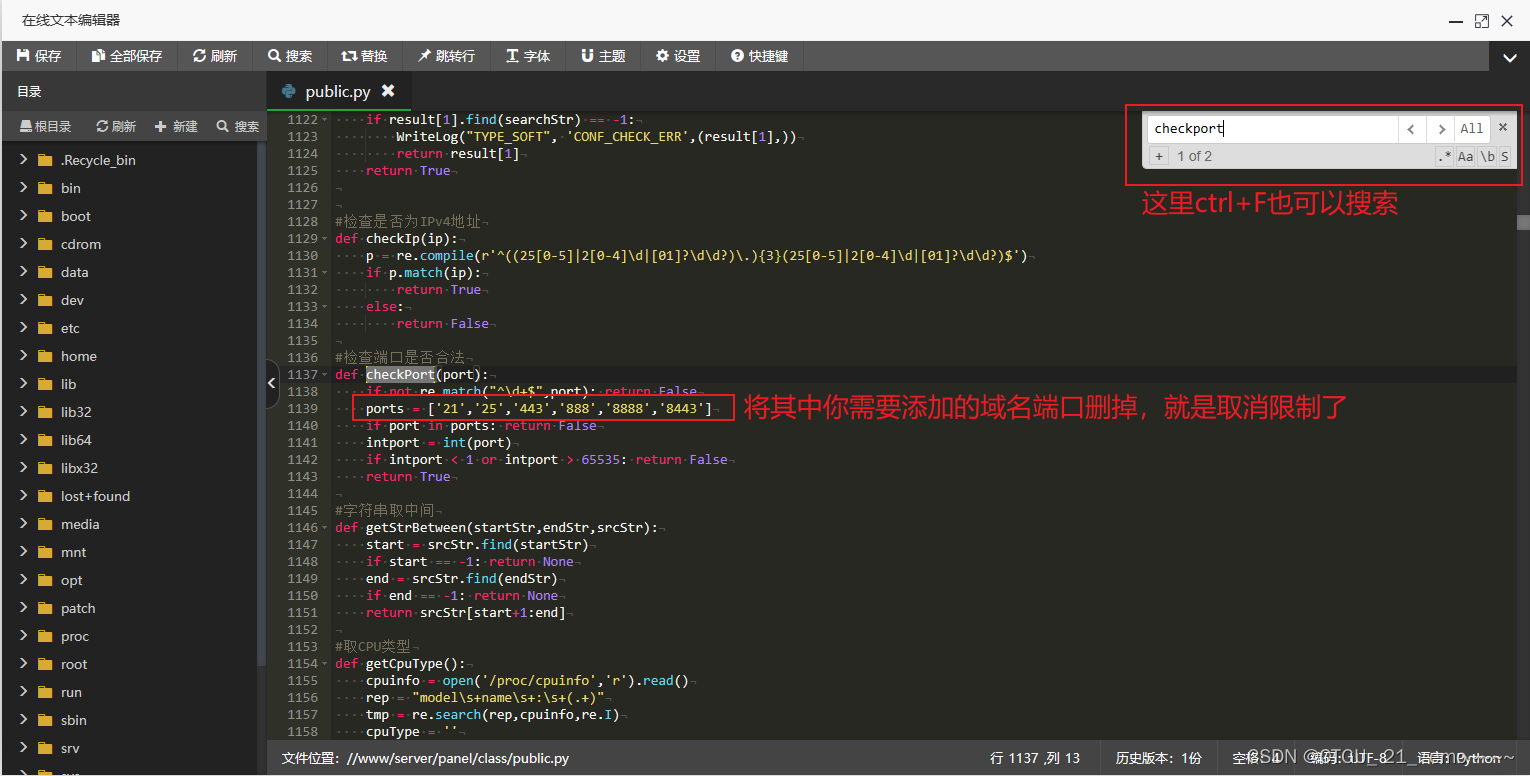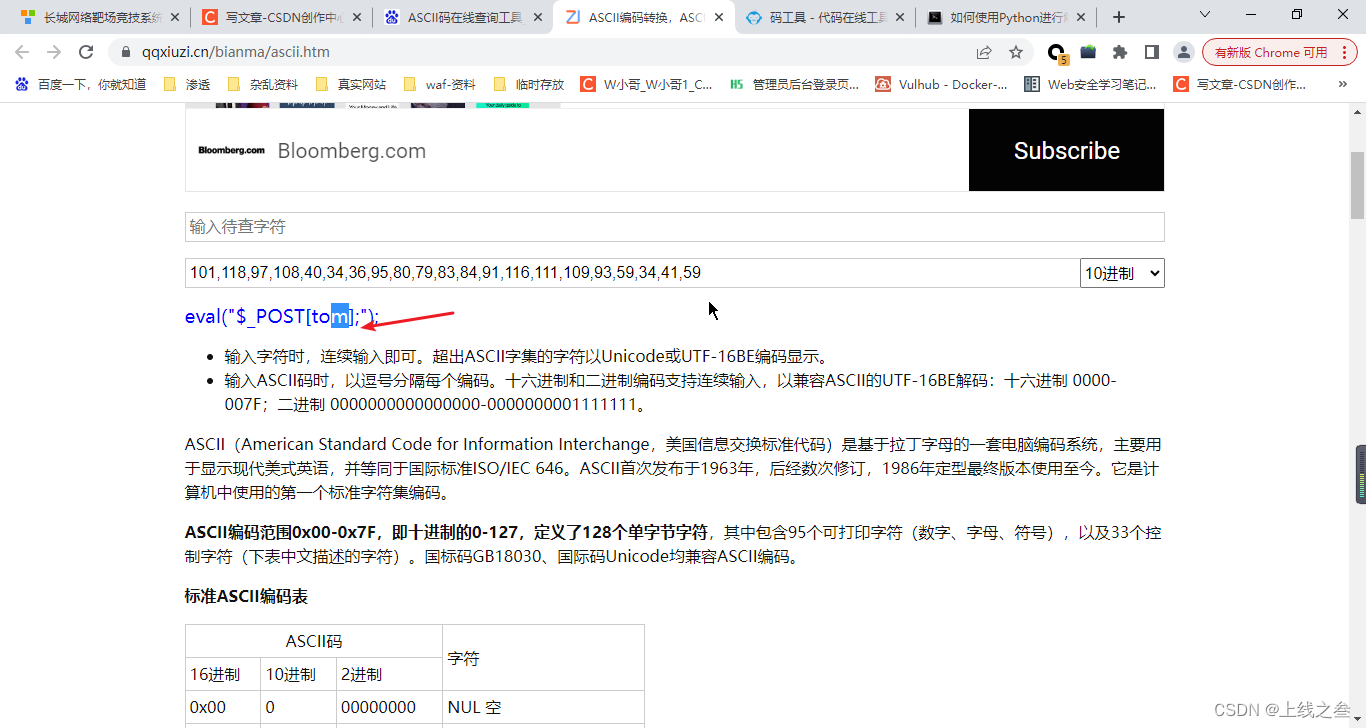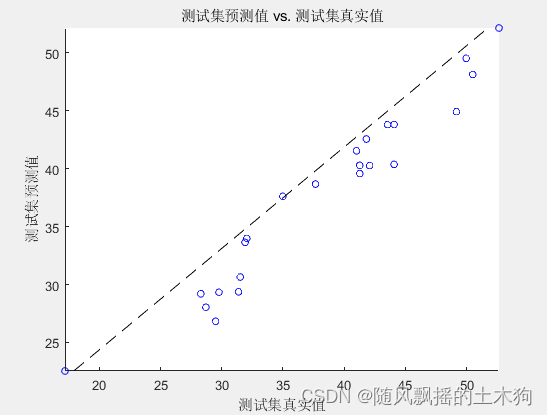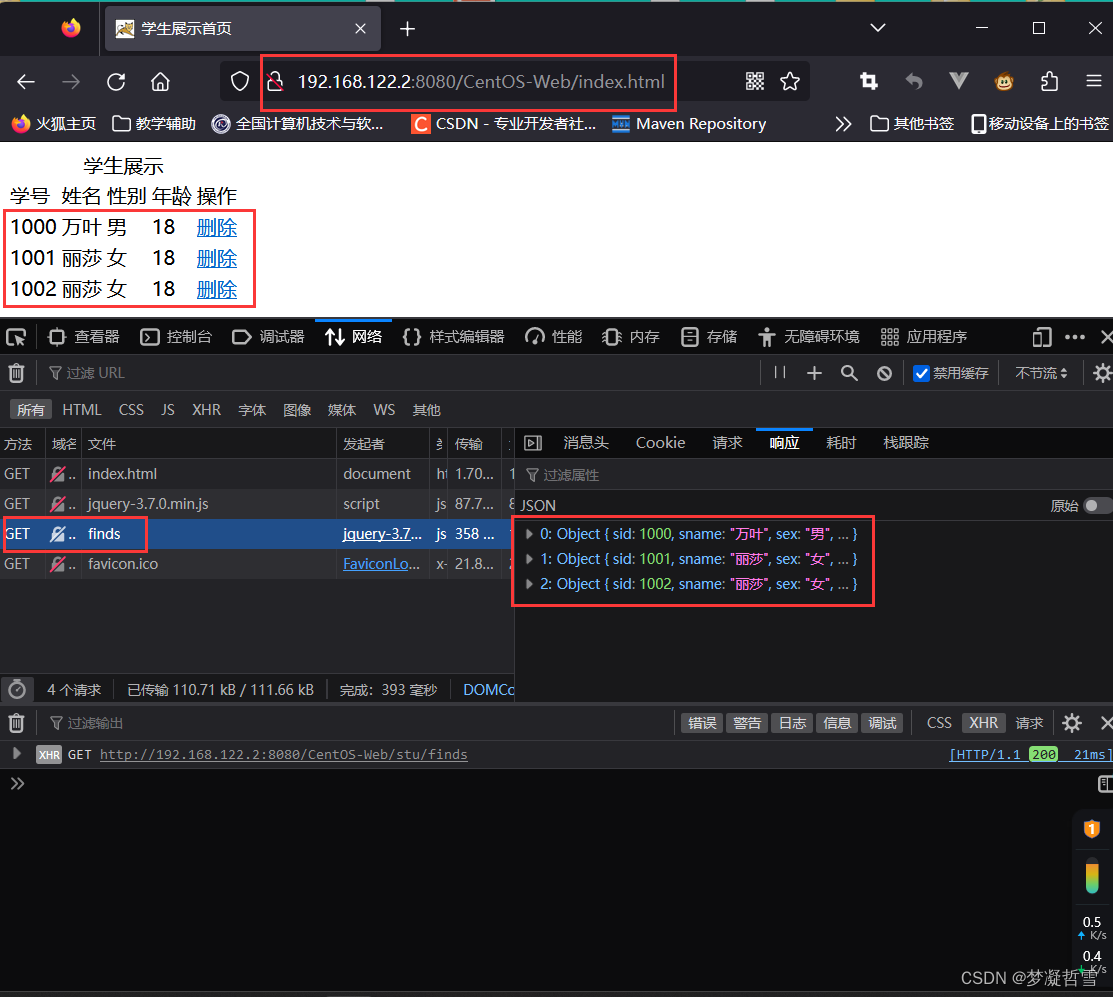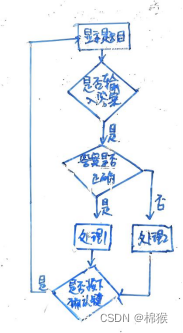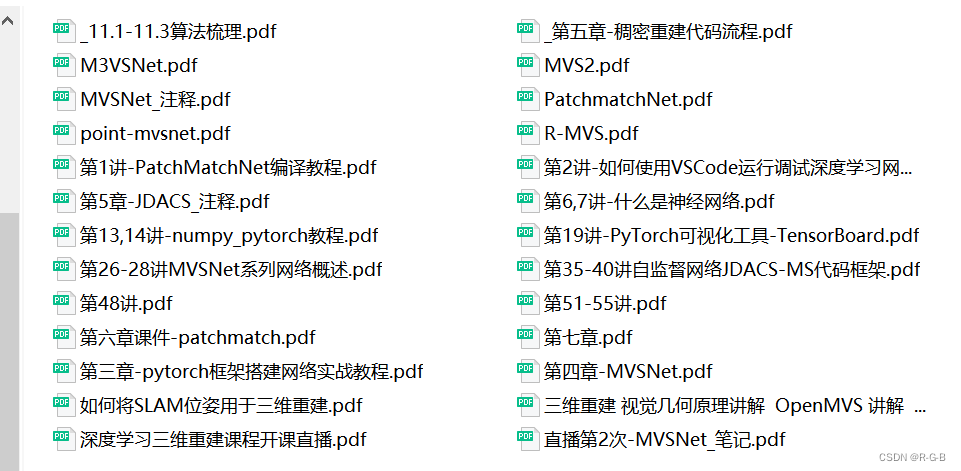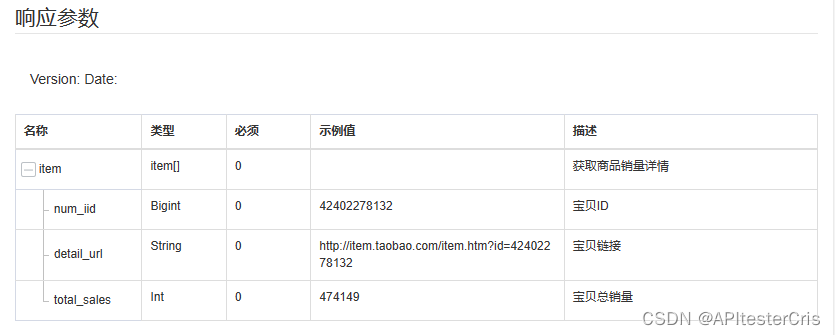😏★,°:.☆( ̄▽ ̄)/$:.°★ 😏
这篇文章主要介绍Python数据分析基础。
无专精则不能成,无涉猎则不能通。——梁启超
欢迎来到我的博客,一起学习,共同进步。
喜欢的朋友可以关注一下,下次更新不迷路🥞
文章目录
- :smirk:1. Python数据分析介绍
- :blush:2. 环境配置
- :satisfied:3. 使用说明
😏1. Python数据分析介绍
Python适合用来做数据分析。以下是一些用Python进行数据分析的常用工具和库:
1.NumPy:用于在Python中进行快速、高性能的数值计算,提供了强大的多维数组对象和相关函数。
2.Pandas:提供了用于数据操作和分析的高级数据结构和函数,包括数据清洗、处理缺失值、数据重塑、合并、聚合等功能。
3.Matplotlib:一个广泛使用的绘图库,可用于创建各种静态、动态、交互式的图表和可视化。
4.Seaborn:基于Matplotlib的统计数据可视化库,提供了更高级的图表样式和绘图函数,使得绘制各种统计图表更加简单。
5.Scipy:用于科学计算、数值计算、优化、插值和统计分析的库,提供了许多常用的算法和函数。
6.Scikit-learn:机器学习库,提供了各种常见的机器学习算法、数据预处理、特征选择和模型评估等功能。
7.Jupyter Notebook:交互式计算环境,可以将代码、图表、文本和其他元素组合在一起,方便数据分析过程的记录和展示。
😊2. 环境配置
推荐一个python数据分析Github地址:https://github.com/cbrownley/foundations-for-analytics-with-python
该仓库对应《Python数据分析基础》一书。
首先,确认安装好Python环境,首先复习Python语法基础:
#!/usr/bin/env python3
from math import exp, log, sqrt
import re
from datetime import date, time, datetime, timedelta
from operator import itemgetter
import sys
import glob
import os
# 有些语法错误,如缺少括号,缩进错误,需修改
# 打印字符串
print("Output #1: I'm excited to learn Python.")
# 两数相加
x = 4
y = 5
z = x + y
print("Output #2: Four plus five equals {0:d}.".format(z))
# 合并两个list
a = [1, 2, 3, 4]
b = ["first", "second", "third", "fourth"]
c = a + b
print("Output #3: {0}, {1}, {2}".format(a, b, c))
# 整型运算
x = 9
print("Output #4: {0}".format(x))
print("Output #5: {0}".format(3**4))
print("Output #6: {0}".format(int(8.3)/int(2.7)))
# 浮点型运算
print("Output #7: {0:.3f}".format(8.3/2.7))
y = 2.5*4.8
print("Output #8: {0:.1f}".format(y))
r = 8/float(3)
print("Output #9: {0:.2f}".format(r))
print("Output #10: {0:.4f}".format(8.0/3))
# 数学模块
print("Output #11: {0:.4f}".format(exp(3)))
print("Output #12: {0:.2f}".format(log(4)))
print("Output #13: {0:.1f}".format(sqrt(81)))
# 字符串
# 带单引号的字符串,需在单引号前加\
print("Output #14: {0:s}".format('I\'m enjoying learning Python'))
# 多行字符串,在行尾添加\
print("Output #15: {0:s}".format("This is a long string. Without the backslash \
it would run off of the page on the right in the text editor and be very \
difficult to read and edit. By using the backslash you can split the long \
string into smaller strings on separate lines so that the whole string is easy \
to view in the text editor."))
# 多行字符串也可用```或"""
print("Output #16: {0:s}".format('''You can use triple single quotes
for multi-line comment strings'''))
print("Output #17: {0:s}".format("""You can also use triple double quotations
for multi-line comment strings"""))
# 合并字符串
string1 = "This is a "
string2 = "short string."
sentence = string1 + string2
print("Output #18: {0:s}".format(sentence))
# 重复一个字符串四次
print("Output #19: {0:s} {1:s}{2:s}".format("She is", "very "*4, "beautiful."))
# 计算字符串中的字符数,包含标点和空格
m = len(sentence)
print("Output #20: {0:d}".format(m))
# 分割字符串
string1 = "My deliverable is due in May"
string1_list1 = string1.split()
string1_list2 = string1.split(" ", 2)
print("Output #21: {0}".format(string1_list1))
print("Output #22: FIRST PIECE:{0} SECOND PIECE:{1} THIRD PIECE:{2}"\
.format(string1_list2[0], string1_list2[1], string1_list2[2]))
string2 = "Your,deliverable,is,due,in,June"
string2_list = string2.split(',')
print("Output #23: {0}".format(string2_list))
print("Output #24: {0} {1} {2}".format(string2_list[1], string2_list[5], string2_list[-1]))
# 在字符串间加入,
print("Output #25: {0}".format(','.join(string2_list)))
# 字符串除去
string3 = " Remove unwanted characters from this string\t\t \n"
print("Output #26: string3: {0:s}".format(string3))
string3_lstrip = string3.lstrip()
print("Output #27: lstrip: {0:s}".format(string3_lstrip))
string3_rstrip = string3.rstrip()
print("Output #28: rstrip: {0:s}".format(string3_rstrip))
string3_strip = string3.strip()
print("Output #29: strip: {0:s}".format(string3_strip))
string4 = "$$Here's another string that has unwanted characters.__---++"
print("Output #30: {0:s}".format(string4))
string4 = "$$The unwanted characters have been removed.__---++"
string4_strip = string4.strip('$_-+')
print("Output #31: {0:s}".format(string4_strip))
# 字符串替代
string5 = "Let's replace the spaces in this sentence with other characters."
string5_replace = string5.replace(" ", "!@!")
print("Output #32 (with !@!): {0:s}".format(string5_replace))
string5_replace = string5.replace(" ", ",")
print("Output #33 (with commas): {0:s}".format(string5_replace))
# 字符串转小写、转大写、首字母大写
string6 = "Here's WHAT Happens WHEN You Use lower."
print("Output #34: {0:s}".format(string6.lower()))
string7 = "Here's what Happens when You Use UPPER."
print("Output #35: {0:s}".format(string7.upper()))
string8 = "here's WHAT Happens WHEN you use Capitalize."
print("Output #36: {0:s}".format(string8.capitalize()))
string8_list = string8.split()
print("Output #37 (on each word):")
for word in string8_list:
print("{0:s}".format(word.capitalize()))
# 正则表达式/模式匹配
# 计算一个模式在字符串中出现的次数
string = "The quick brown fox jumps over the lazy dog."
string_list = string.split()
pattern = re.compile(r"The", re.I)
count = 0
for word in string_list:
if pattern.search(word):
count += 1
print("Output #38: {0:d}".format(count))
# 每次找到时都打印
string = "The quick brown fox jumps over the lazy dog."
string_list = string.split()
pattern = re.compile(r"(?P<match_word>The)", re.I)
print("Output #39:")
for word in string_list:
if pattern.search(word):
print("{:s}".format(pattern.search(word).group('match_word')))
# 用字母 a 代替单次 the
string = "The quick brown fox jumps over the lazy dog."
string_to_find = r"The"
pattern = re.compile(string_to_find, re.I)
print("Output #40: {:s}".format(pattern.sub("a", string)))
# 日期
# Print today's date, as well as the year, month, and day elements
today = date.today()
print("Output #41: today: {0!s}".format(today))
print("Output #42: {0!s}".format(today.year))
print("Output #43: {0!s}".format(today.month))
print("Output #44: {0!s}".format(today.day))
current_datetime = datetime.today()
print("Output #45: {0!s}".format(current_datetime))
# 用timedelta计算新日期
one_day = timedelta(days=-1)
yesterday = today + one_day
print("Output #46: yesterday: {0!s}".format(yesterday))
eight_hours = timedelta(hours=-8)
print("Output #47: {0!s} {1!s}".format(eight_hours.days, eight_hours.seconds))
# 计算两个日期的差值,分出第一个字符
date_diff = today - yesterday
print("Output #48: {0!s}".format(date_diff))
print("Output #49: {0!s}".format(str(date_diff).split()[0]))
# 特定格式的日期字符串
print("Output #50: {:s}".format(today.strftime('%m/%d/%Y')))
print("Output #51: {:s}".format(today.strftime('%b %d, %Y')))
print("Output #52: {:s}".format(today.strftime('%Y-%m-%d')))
print("Output #53: {:s}".format(today.strftime('%B %d, %Y')))
# Create a datetime object with a specific format
# from a string representing a date
date1 = today.strftime('%m/%d/%Y')
date2 = today.strftime('%b %d, %Y')
date3 = today.strftime('%Y-%m-%d')
date4 = today.strftime('%B %d, %Y')
# Two datetime objects and two date objects
# based on the four strings that have different date formats
print("Output #54: {!s}".format(datetime.strptime(date1, '%m/%d/%Y')))
print("Output #55: {!s}".format(datetime.strptime(date2, '%b %d, %Y')))
# 只显示日期部分
print("Output #56: {!s}".format(datetime.date(datetime.strptime\
(date3, '%Y-%m-%d'))))
print("Output #57: {!s}".format(datetime.date(datetime.strptime\
(date4, '%B %d, %Y'))))
# LISTS
# Use square brackets to create a list
# len() counts the number of elements in a list
# max() and min() find the maximum and minimum numbers in numeric lists
# count() counts the number of times a value appears in a list
a_list = [1, 2, 3]
print("Output #58: {}".format(a_list))
print("Output #59: a_list has {} elements.".format(len(a_list)))
print("Output #60: the maximum value in a_list is {}.".format(max(a_list)))
print("Output #61: the minimum value in a_list is {}.".format(min(a_list)))
another_list = ['printer', 5, ['star', 'circle', 9]]
print("Output #62: {}".format(another_list))
print("Output #63: another_list also has {} elements.".format(len(another_list)))
print("Output #64: 5 is in another_list {} time.".format(another_list.count(5)))
# Use list indices to access specific values in a list
# [0] is the first value; [-1] is the last value
print("Output #65: {}".format(a_list[0]))
print("Output #66: {}".format(a_list[1]))
print("Output #67: {}".format(a_list[2]))
print("Output #68: {}".format(a_list[-1]))
print("Output #69: {}".format(a_list[-2]))
print("Output #70: {}".format(a_list[-3]))
print("Output #71: {}".format(another_list[2]))
print("Output #72: {}".format(another_list[-1]))
# Use list slices to access a subset of list values
# Do not include the starting indice to start from the beginning
# Do not include the ending indice to go all of the way to the end
print("Output #73: {}".format(a_list[0:2]))
print("Output #74: {}".format(another_list[:2]))
print("Output #75: {}".format(a_list[1:3]))
print("Output #76: {}".format(another_list[1:]))
# Use [:] to make a copy of a list
a_new_list = a_list[:]
print("Output #77: {}".format(a_new_list))
# 用 + 将多个list合并
a_longer_list = a_list + another_list # to add lists together
print("Output #78: {}".format(a_longer_list))
# Use 'in' and 'not in' to check whether specific values are or are not in a list
a = 2 in a_list
print("Output #79: {}".format(a))
if 2 in a_list:
print("Output #80: 2 is in {}.".format(a_list))
b = 6 not in a_list
print("Output #81: {}".format(b))
if 6 not in a_list:
print("Output #82: 6is not in {}.".format(a_list))
# Use append() to add additional values to the end of the list
# Use remove() to remove specific values from the list
# Use pop() to remove values from the end of the list
a_list.append(4)
a_list.append(5)
a_list.append(6)
print("Output #83: {}".format(a_list))
a_list.remove(5)
print("Output #84: {}".format(a_list))
a_list.pop()
a_list.pop()
print("Output #85: {}".format(a_list))
# Use reverse() to reverse a list, in-place, meaning it changes the list
# To reverse a list without changing the original list, make a copy first
a_list.reverse()
print("Output #86: {}".format(a_list))
a_list_copy = a_list[:]
a_list_copy.reverse()
print("Output #87: {}".format(a_list_copy))
# Use sort() to sort a list, in-place, meaning it changes the list
# To sort a list without changing the original list, make a copy first
unordered_list = [3, 5, 1, 7, 2, 8, 4, 9, 0, 6]
print("Output #88: {}".format(unordered_list))
list_copy = unordered_list[:]
list_copy.sort()
print("Output #89: {}".format(list_copy))
print("Output #90: {}".format(unordered_list))
# Use sorted() to sort a collection of lists by a position in the lists
my_lists = [[1,2,3,4], [4,3,2,1], [2,4,1,3]]
my_lists_sorted_by_index_3 = sorted(my_lists, key=lambda index_value: index_value[3])
print("Output #91: {}".format(my_lists_sorted_by_index_3))
# Use itemgetter() to sort a collection of lists by two index positions
my_lists = [[123,2,2,444], [22,6,6,444], [354,4,4,678], [236,5,5,678], \
[578,1,1,290], [461,1,1,290]]
my_lists_sorted_by_index_3_and_0 = sorted(my_lists, key=itemgetter(3,0))
print("Output #92: {}".format(my_lists_sorted_by_index_3_and_0))
# TUPLES
# Use parentheses to create a tuple
my_tuple = ('x', 'y', 'z')
print("Output #93: {}".format(my_tuple))
print("Output #94: my_tuple has {} elements".format(len(my_tuple)))
print("Output #95: {}".format(my_tuple[1]))
longer_tuple = my_tuple + my_tuple
print("Output #96: {}".format(longer_tuple))
# Unpack tuples with the left-hand side of an assignment operator
one, two, three = my_tuple
print("Output #97: {0} {1} {2}".format(one, two, three))
var1 = 'red'
var2 = 'robin'
print("Output #98: {} {}".format(var1, var2))
# Swap values between variables
var1, var2 = var2, var1
print("Output #99: {} {}".format(var1, var2))
# Convert tuples to lists and lists to tuples
my_list = [1, 2, 3]
my_tuple = ('x', 'y', 'z')
print("Output #100: {}".format(tuple(my_list)))
print("Output #101: {}".format(list(my_tuple)))
# DICTIONARIES
# Use curly braces to create a dictionary
# Use a colon between keys and values in each pair
# len() counts the number of key-value pairs in a dictionary
empty_dict = { }
a_dict = {'one':1, 'two':2, 'three':3}
print("Output #102: {}".format(a_dict))
print("Output #103: a_dict has {!s} elements".format(len(a_dict)))
another_dict = {'x':'printer', 'y':5, 'z':['star', 'circle', 9]}
print("Output #104: {}".format(another_dict))
print("Output #105: another_dict also has {!s} elements"\
.format(len(another_dict)))
# Use keys to access specific values in a dictionary
print("Output #106: {}".format(a_dict['two']))
print("Output #107: {}".format(another_dict['z']))
# Use copy() to make a copy of a dictionary
a_new_dict = a_dict.copy()
print("Output #108: {}".format(a_new_dict))
# Use keys(), values(), and items() to access
# a dictionary's keys, values, and key-value pairs, respectively
print("Output #109: {}".format(a_dict.keys()))
a_dict_keys = a_dict.keys()
print("Output #110: {}".format(a_dict_keys))
print("Output #111: {}".format(a_dict.values()))
print("Output #112: {}".format(a_dict.items()))
# Use in, not in, and get to test
# whether a key is in a dictionary
if 'y' in another_dict:
print("Output #114: y is a key in another_dict: {}."\
.format(another_dict.keys()))
if 'c' not in another_dict:
print("Output #115: c is not a key in another_dict: {}."\
.format(another_dict.keys()))
print("Output #116: {!s}".format(a_dict.get('three')))
print("Output #117: {!s}".format(a_dict.get('four')))
print("Output #118: {!s}".format(a_dict.get('four', 'Not in dict')))
# Use sorted() to sort a dictionary
# To sort a dictionary without changing the original dictionary,
# make a copy first
print("Output #119: " + str(a_dict))
dict_copy = a_dict.copy()
ordered_dict1 = sorted(dict_copy.items(), key=lambda item: item[0])
print("Output #120 (order by keys): {}".format(ordered_dict1))
ordered_dict2 = sorted(dict_copy.items(), key=lambda item: item[1])
print("Output #121 (order by values): {}".format(ordered_dict2))
ordered_dict3 = sorted(dict_copy.items(), key=lambda x: x[1], reverse=True)
print("Output #122 (order by values, descending): {}".format(ordered_dict3))
ordered_dict4 = sorted(dict_copy.items(), key=lambda x: x[1], reverse=False)
print("Output #123 (order by values, ascending): {}".format(ordered_dict4))
# 控制流结构
# if-else statement
x = 5
if x > 4 or x != 9:
print("Output #124: {}".format(x))
else:
print("Output #125: x is not greater than 4")
# if-elif-else statement
if x > 6:
print("Output #126: x is greater than six")
elif x > 4 and x == 5:
print("Output #127: {}".format(x*x))
else:
print("Output #128: x is not greater than 4")
# for loop
y = ['Jan', 'Feb', 'Mar', 'Apr', 'May', 'Jun', 'Jul', 'Aug', 'Sep', 'Oct', \
'Nov', 'Dec']
z = ['Annie', 'Betty', 'Claire', 'Daphne', 'Ellie', 'Franchesca', 'Greta', \
'Holly', 'Isabel', 'Jenny']
print("Output #129:")
for month in y:
print("{!s}".format(month))
print("Output #130: (index value: name in list)")
for i in range(len(z)):
print("{0!s}: {1:s}".format(i, z[i]))
print("Output #131: (access elements in y with z's index values)")
for j in range(len(z)):
if y[j].startswith('J'):
print("{!s}".format(y[j]))
print("Output #132:")
for key, value in another_dict.items():
print("{0:s}, {1}".format(key, value))
# compact for loops
# list, set, and dictionary comprehensions
# Select specific rows using a list comprehension
my_data = [[1,2,3], [4,5,6], [7,8,9]]
rows_to_keep = [row for row in my_data if row[2] > 5]
print("Output #133 (list comprehension): {}".format(rows_to_keep))
# Select a set of unique tuples in a list using a set comprehension
my_data = [(1,2,3), (4,5,6), (7,8,9), (7,8,9)]
set_of_tuples1 = {x for x in my_data}
print("Output #134 (set comprehension): {}".format(set_of_tuples1))
set_of_tuples2 = set(my_data)
print("Output #135 (set function): {}".format(set_of_tuples2))
# Select specific key-value pairs using a dictionary comprehension
my_dictionary = {'customer1': 7, 'customer2': 9, 'customer3': 11}
my_results = {key : value for key, value in my_dictionary.items() if \
value > 10}
print("Output #136 (dictionary comprehension): {}".format(my_results))
# while循环
print("Output #137:")
x = 0
while x < 11:
print("{!s}".format(x))
x += 1
# 函数
# Calculate the mean of a sequence of numeric values
def getMean(numericValues):
return sum(numericValues)/len(numericValues) if len(numericValues) > 0 \
else float('nan')
my_list = [2, 2, 4, 4, 6, 6, 8, 8]
print("Output #138 (mean): {!s}".format(getMean(my_list)))
#import numpy as np
#print np.mean(my_list)
# 异常处理
# Calculate the mean of a sequence of numeric values
def getMean(numericValues):
return sum(numericValues)/len(numericValues)
my_list2 = [ ]
# Short version
try:
print("Output #139: {}".format(getMean(my_list2)))
except ZeroDivisionError as detail:
print("Output #139 (Error): {}".format(float('nan')))
print("Output #139 (Error): {}".format(detail))
# Long version
try:
result = getMean(my_list2)
except ZeroDivisionError as detail:
print("Output #140 (Error): {}".format(float('nan')))
print("Output #140 (Error): {}".format(detail))
else:
print("Output #140 (The mean is): {}".format(result))
finally:
print("Output #140 (Finally): The finally block is executed every time")
# 文件读取
# Read a single text file
#input_file = sys.argv[1]
## Read a text file (older method) ##
#print("Output #141:")
#filereader = open(input_file, 'r', newline='')
#for row in filereader:
# print("{}".format(row.strip()))
#filereader.close()
## Read a text file (newer method) ##
#print("Output #142:")
#with open(input_file, 'r', newline='') as filereader:
# for row in filereader:
# print("{}".format(row.strip()))
#print("Output #143:")
# READ MULTIPLE FILES
# Read multiple text files
#inputPath = sys.argv[1]
#for input_file in glob.glob(os.path.join(inputPath,'*.txt')):
# with open(input_file, 'r', newline='') as filereader:
# for row in filereader:
# print("{}".format(row.strip()))
# 写入文件
# Write to a text file
#my_letters = ['a', 'b', 'c', 'd', 'e', 'f', 'g', 'h', 'i', 'j']
#max_index = len(my_letters)
#output_file = sys.argv[1]
#filewriter = open(output_file, 'w')
#for index_value in range(len(my_letters)):
# if index_value < (max_index-1):
# filewriter.write(my_letters[index_value]+'\t')
# else:
# filewriter.write(my_letters[index_value]+'\n')
#filewriter.close()
#print("Output #144: Output written to file")
# 写入csv文件
#my_numbers = [0, 1, 2, 3, 4, 5, 6, 7, 8, 9]
#max_index = len(my_numbers)
#output_file = sys.argv[1]
#filewriter = open(output_file, 'a')
#for index_value in range(len(my_numbers)):
# if index_value < (max_index-1):
# filewriter.write(str(my_numbers[index_value])+',')
# else:
# filewriter.write(str(my_numbers[index_value])+'\n')
#filewriter.close()
#print("Output #145: Output appended to file")
# end
😆3. 使用说明
下面进行使用分析:
用sys模块从文件读取并写入另一个文件示例:
#!/usr/bin/env python3
import sys
input_file = sys.argv[1]
output_file = sys.argv[2]
with open(input_file, 'r', newline='') as filereader:
with open(output_file, 'w', newline='') as filewriter:
header = filereader.readline()
header = header.strip()
header_list = header.split(',')
print(header_list)
filewriter.write(','.join(map(str,header_list))+'\n')
for row in filereader:
row = row.strip()
row_list = row.split(',')
print(row_list)
filewriter.write(','.join(map(str,row_list))+'\n')
用csv模块从csv文件读取并写入另一个csv文件示例:
#!/usr/bin/env python3
import csv
import sys
input_file = sys.argv[1]
output_file = sys.argv[2]
with open(input_file, 'r', newline='') as csv_in_file:
with open(output_file, 'w', newline='') as csv_out_file:
filereader = csv.reader(csv_in_file, delimiter=',')
filewriter = csv.writer(csv_out_file, delimiter=',')
for row_list in filereader:
filewriter.writerow(row_list)
用matplot模块绘制柱形图示例:
#!/usr/bin/env python3
import matplotlib.pyplot as plt
plt.style.use('ggplot')
customers = ['ABC', 'DEF', 'GHI', 'JKL', 'MNO']
customers_index = range(len(customers))
sale_amounts = [127, 90, 201, 111, 232]
fig = plt.figure()
ax1 = fig.add_subplot(1,1,1)
ax1.bar(customers_index, sale_amounts, align='center', color='darkblue')
ax1.xaxis.set_ticks_position('bottom')
ax1.yaxis.set_ticks_position('left')
plt.xticks(customers_index, customers, rotation=0, fontsize='small')
plt.xlabel('Customer Name')
plt.ylabel('Sale Amount')
plt.title('Sale Amount per Customer')
plt.savefig('bar_plot.png', dpi=400, bbox_inches='tight')
plt.show()

以上。
